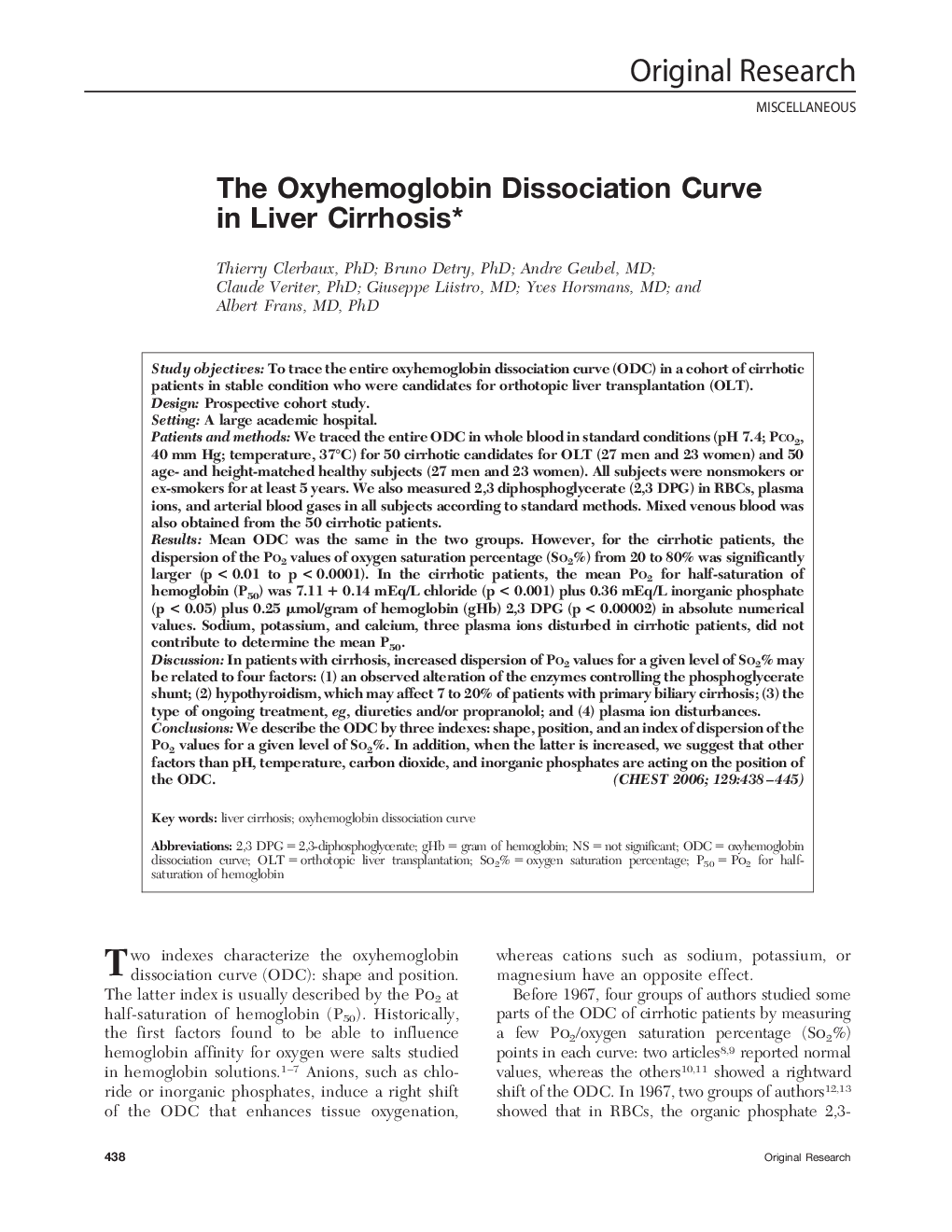| Article ID | Journal | Published Year | Pages | File Type |
|---|---|---|---|---|
| 2906169 | Chest | 2006 | 8 Pages |
Study objectivesTo trace the entire oxyhemoglobin dissociation curve (ODC) in a cohort of cirrhotic patients in stable condition who were candidates for orthotopic liver transplantation (OLT).DesignProspective cohort study.SettingA large academic hospital.Patients and methodsWe traced the entire ODC in whole blood in standard conditions (pH 7.4; Pco2, 40 mm Hg; temperature, 37°C) for 50 cirrhotic candidates for OLT (27 men and 23 women) and 50 age- and height-matched healthy subjects (27 men and 23 women). All subjects were nonsmokers or ex-smokers for at least 5 years. We also measured 2,3 diphosphoglycerate (2,3 DPG) in RBCs, plasma ions, and arterial blood gases in all subjects according to standard methods. Mixed venous blood was also obtained from the 50 cirrhotic patients.ResultsMean ODC was the same in the two groups. However, for the cirrhotic patients, the dispersion of the Po2 values of oxygen saturation percentage (So2%) from 20 to 80% was significantly larger (p < 0.01 to p < 0.0001). In the cirrhotic patients, the mean Po2 for half-saturation of hemoglobin (P50) was 7.11 + 0.14 mEq/L chloride (p < 0.001) plus 0.36 mEq/L inorganic phosphate (p < 0.05) plus 0.25 μmol/gram of hemoglobin (gHb) 2,3 DPG (p < 0.00002) in absolute numerical values. Sodium, potassium, and calcium, three plasma ions disturbed in cirrhotic patients, did not contribute to determine the mean P50.DiscussionIn patients with cirrhosis, increased dispersion of Po2 values for a given level of So2% may be related to four factors: (1) an observed alteration of the enzymes controlling the phosphoglycerate shunt; (2) hypothyroidism, which may affect 7 to 20% of patients with primary biliary cirrhosis; (3) the type of ongoing treatment, eg, diuretics and/or propranolol; and (4) plasma ion disturbances.ConclusionsWe describe the ODC by three indexes: shape, position, and an index of dispersion of the Po2 values for a given level of So2%. In addition, when the latter is increased, we suggest that other factors than pH, temperature, carbon dioxide, and inorganic phosphates are acting on the position of the ODC.
